Dynamite was a quick way of removing stumps after felling a tree. My dad tells of playing in his yard as a kid while skme neighbor was claring a few stumps when one unceremoniously landed aa few feet from him…that was the end of play for that day!
Back in the late 80’s here in Phoenix area , a pickup, while transporting dynamite to a blasting site north of town blew up and the engine landed on a car about 200 ft away . I think the guy tossed a cigarette out the window and it landed in the bed and eventually set it all off.I dont think they were following any of the rules at the time.
Modeling Explosive Handlers on the Layout
Whose who in the bang gang
Powder Monkey - the oldest term applied to anyone working with explosives. The name originated in the 17th century onboard naval vessels. It denoted a young boy whose job was to carry black powder during battle from the ships magazine to the gun deck. The name carried over to early engineering blasting with the use of black powder. It became the common term for workers on hard-rock demolition projects of the 1930s such as Mount Rushmore and the Hoover dam. It fell into disuse after WWII. On the Cibola Lumber and Mining Company the name of the corporate AA Baseball team is the Powder Monkeys. The miners chose the name as they lived in town and formed most of the team. The lumberjacks spent weeks, sometimes months out at the lumber camps and were seldom available for games.
Shooter - the second oldest term dates back to the late 1800s. It originated in the oil fields of Pennsylvania. The crude oil discovered in the area has a large amounts of wax, tar and sediment which would cause the bore holes to plug up. To clear the holes and restore production an explosive charge called a torpedo (steel tube filled with nitroglycerin and later dynamite) would be lowered into the hole and detonated. This was called “Shooting a well” subsequently the term “shooter” was applied to the men who performed this very dangerous job. The name was later applied to anyone doing any explosive work in the oil industry including fracking and site preparation. Today a shooter is someone who does engineering demolition especially hard-rock for construction.
Blaster - this term came into common use in the twenties. Its exact origins are considerably more vague but the term is used in Dupont’s Farming with Dynamite handbook. The term “blasting tree stumps” or “blasting a ditch” are both used. In logging companies a “Blaster” was someone who went out and threw sticks of dynamite into the river to break up log jams. Since WWII the term has migrated into the vernacular of quarry work. With the advent of non-electric firing line the term blaster is becoming the most common term for explosives workers.
Explosives Expert - no such thing exists but it is occasionally referenced in military jargon starting with the Battle of Britain in WWII. This is someone who deals with ordnance munitions of all kinds but not engineering demolition (although they use the same basic materials). The official definition according to the US Joint Service EOD program is: “Someone who knows the exact amount of C-4 to pack up a bulls ass to knock it’s horns off without making it’s eyes water”. end quote.
A “Powder Monkey” onboard a Union ship during the Civil war.
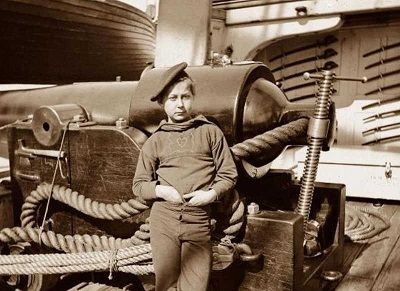
Chinese laborers chipping a rock face on the Central Pacific. The same technique was used to prepare bore holes for early black powder charges.
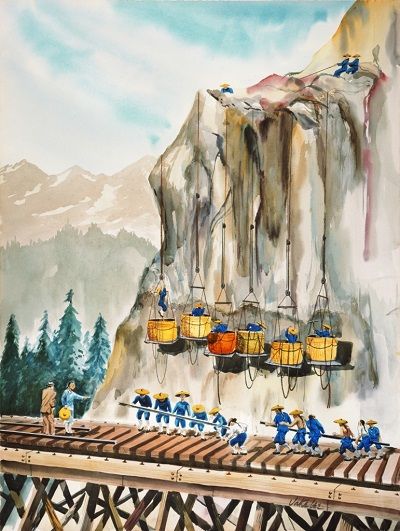
Hard- rock miner circa 1900. Notice that the explosives boxes do not have the labeling that showed up in the 1920s-30s
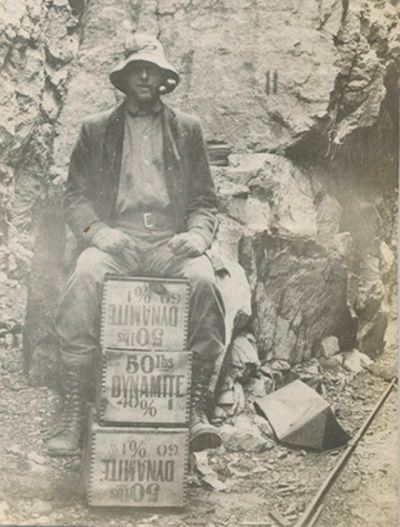
Shooters preparing their torpedoes sometime in the 1920s. They are driving a 1909-10 Ford Model-t runabout converted to a flatbed. I am guessing Texas or California based on the number and close proximity of steel derricks in the back ground.
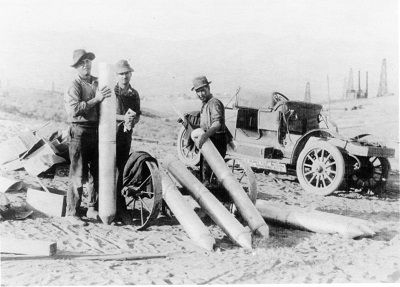
Blaster clearing stumps in the 1920s-30s.

Powder Monkeys working on the Hoover Dam. There is a monument to the men who worked the rope seats at the visitors center north of the dam.
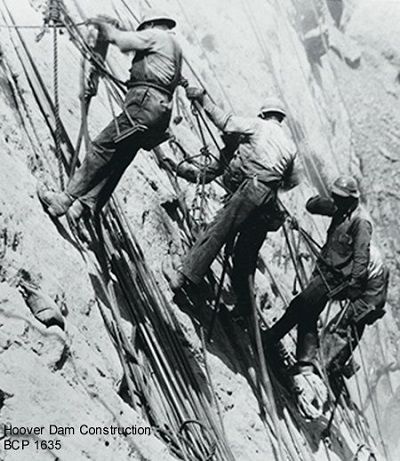
Blasters with the Civilian Conservation Corps pack charges for site prep on the Salmon River Road.
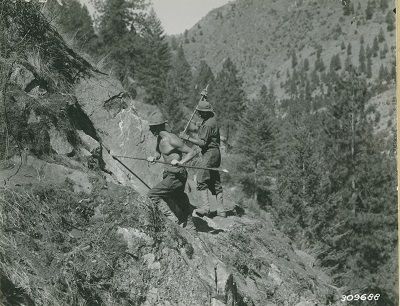
Molybdenum Mining in the early 1950s
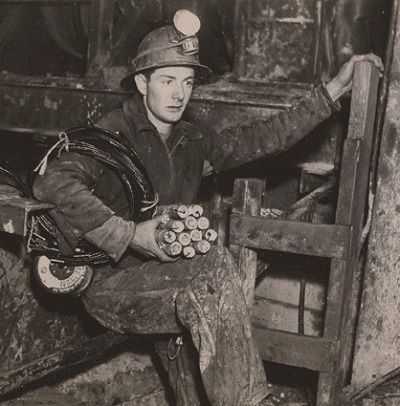
Paul “Red” Adair packs a drum with dynamite for suppression of a oil well fire in the middle east. This real life story was the subject of the movie “The Hellfighters”
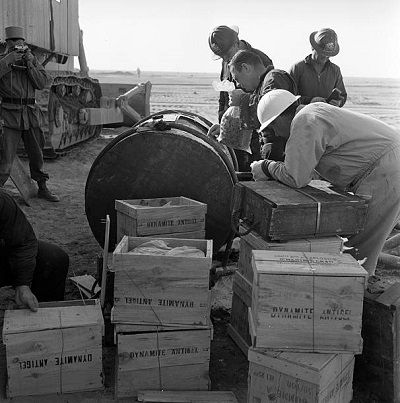
Shooters loading bore holes for tunnel work. The yellow stuff is non-electric firing line.
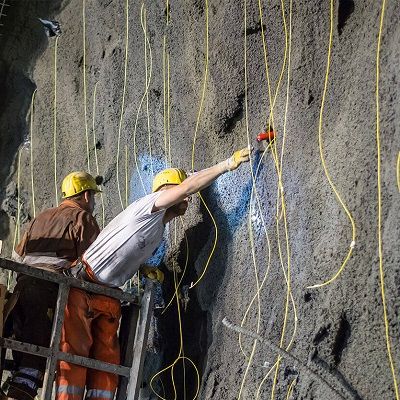
Modeling notes rubble
A few miscellaneous notes for modeling the use of explosives.
Publications on explosive safety pre-WWII.
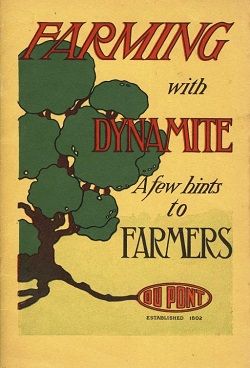
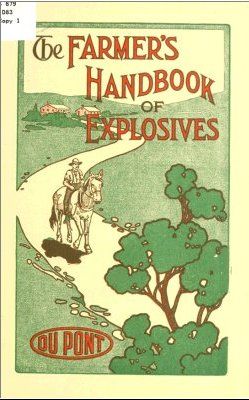
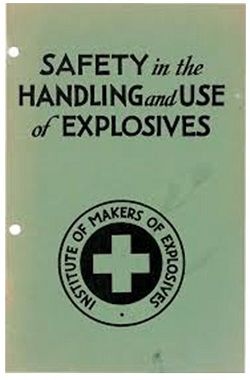
Publications on explosive safety post WWII
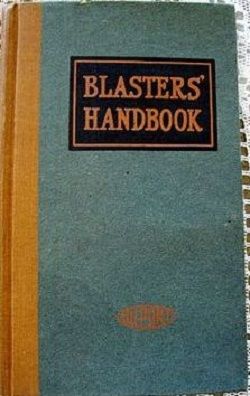
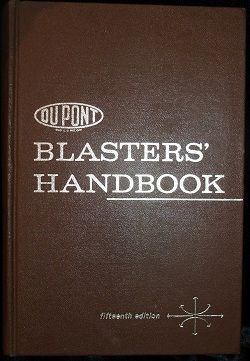
1920s poster
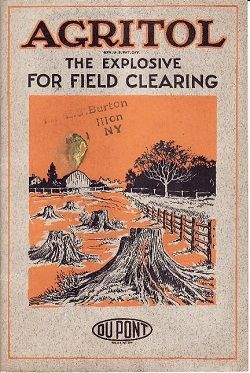
Blasting machines
Invented by Julius Smith in 1886 this plunger style capacitance blasting machine could detonate 50 blasting caps in series. It was in use until the late 1960s. The handle was first raised to get it out of the way then the wires leading to the charge would be attached to the terminals using the wing nuts. When ready the plunger would be shoved down hard and fast. This would spin a dynamo creating voltage. When the plunger reached the bottom it closed an internal switch completing the electric circuit and detonating the blasting caps. It only took once for a blaster to learn to keep his hands open and on top of the handle… otherwise you got your fingers smashed.
Next to it is a battery powered blasting machine from the 1920s. This technology would not be brought to maturity though until the 1990s.
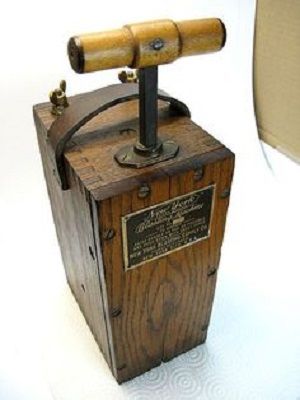
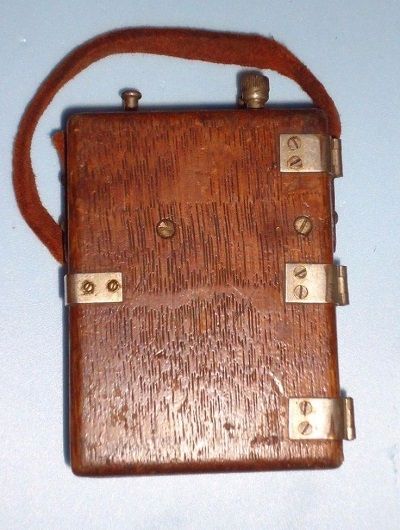
Capacitance blasting machines got smaller and easier to use over the years. The t-handles showed up during WWII and the grip style in the 1970s. The battery powered detonators became common in the 1990s although some versions were available as early as the 1960s.
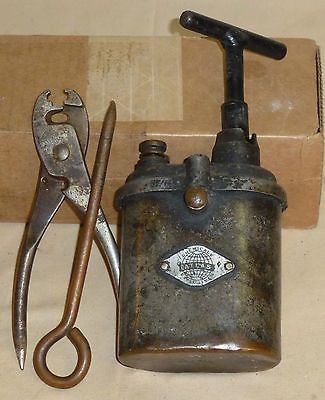
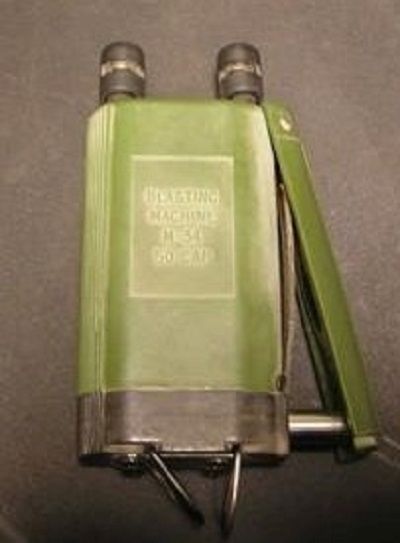
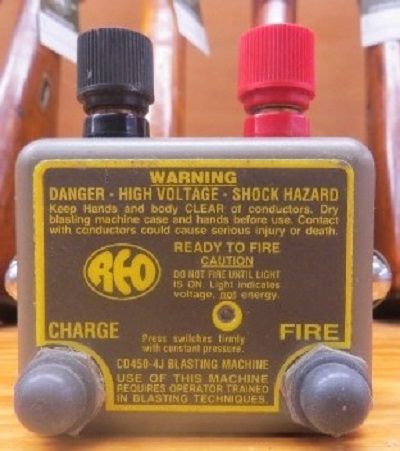
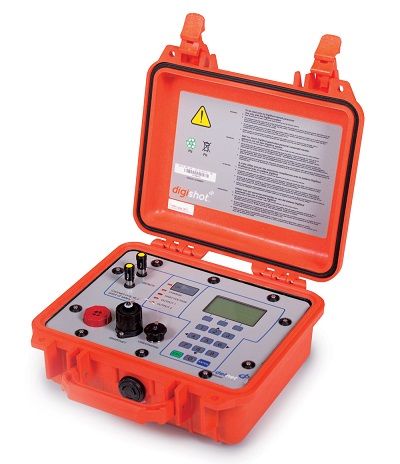
Of course you needed a roll of wire and blasting caps. The old school style spool is on the left dating from the 1930s. The new one in the middle and both electric and non-eletric blasting caps on the end.
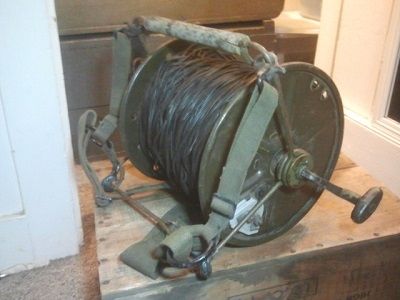
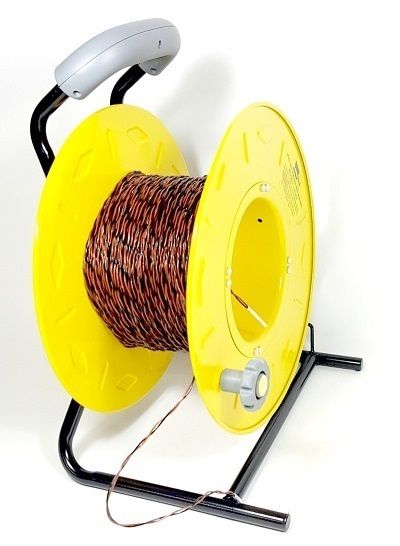
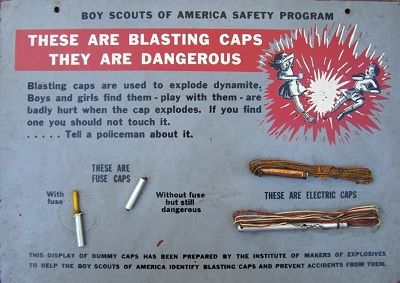
The latest innovation is non-electric firing line called “Nonel”. It is a very small diameter plastic tube containing HMX dust. It is very safe, cheap and reliable. The special igniter sends a small charge down the tube to the blasting cap. The system is well suited for modern blasting and includes a wide selection of boosters, splitters and delays to allow for complex multi charge shots. The blasting machine below can detonate both electric caps and Nonel. In both instances it uses a rechargeable battery.
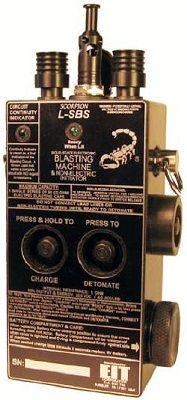
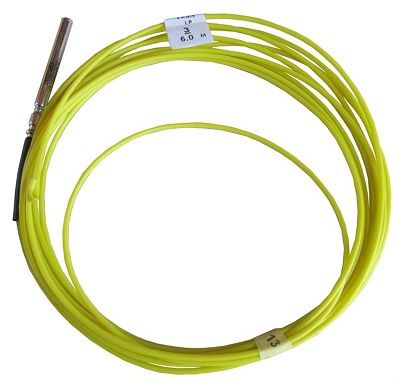
This is a university sponsored explosive safety training vehicle. I could see something like this, perhaps sponsored by DuPont, at a farm COOP giving a lecture or demonstration.
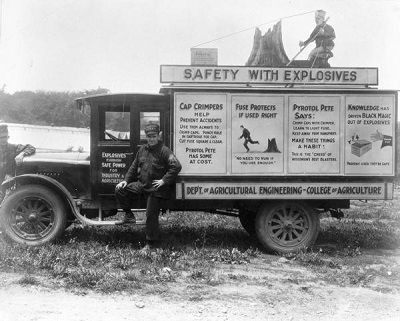
Another explosive safety training effort from the 1930s. This one was set up near the Hoover dam site.
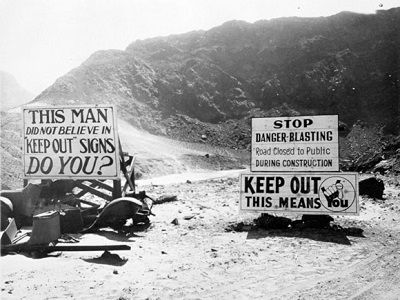
Here is an explosive storage magazine mounted on an old caboose frame.
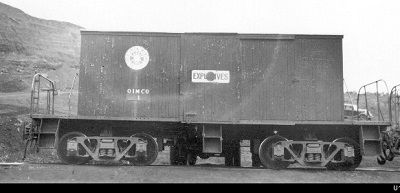
And of course when you have to take the explosives into the mine you need a designated ore car. The IME handbook describes one of these as having doors on top to cover the primary charges and separate small compartment accessed from the front for detonators.
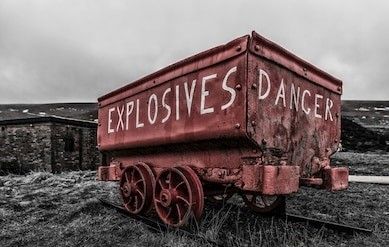
That is all I got. Thanks for giving it a read.
My parents were rockhounds and so I have collected rock since I was a youngster.
A close friend collected rock since the 30s and he was always fun on a collecting trip. He knew how to use dynamite.
If you had rock that need ed nudged he was always happy to help.
Most people have only seen big blasts in movies not realizing that if you know what you are doing you can always just loosen up what you want without a big boom!
Eric Schade said:
Dynamite was a quick way of removing stumps after felling a tree. My dad tells of playing in his yard as a kid while skme neighbor was claring a few stumps when one unceremoniously landed aa few feet from him…that was the end of play for that day!
Eric, I had a similar experience. It was a very surreal experience watching a tree stump come sailing up over this guy’s house and landing in the middle of his driveway.
Explosives Expert - no such thing exists but it is occasionally referenced in military jargon starting with the Battle of Britain in WWII. This is someone who deals with ordnance munitions of all kinds but not engineering demolition (although they use the same basic materials). The official definition according to the US Joint Service EOD program is: “Someone who knows the exact amount of C-4 to pack up a bulls ass to knock it’s horns off without making it’s eyes water”. end quote.
LMAO. Sounds like a military guy alright.
Thanks Boomer! Great stuff.

I want one !
" Rooster " said:
I want one !
Me too! Unfortunately, a quick Google search showed that even a replica sells for $200 or more. 
Ray, so scratch-build one. Its a wooden box, with some detail bits.
Link to how to make the graphics for the dynamite crates and other stuff.
sorry the link is dead.